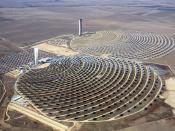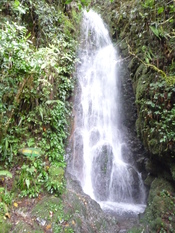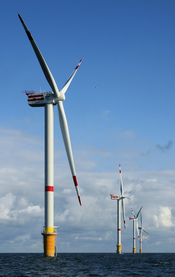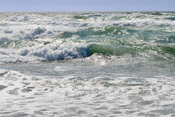Natural resources are naturally occurring substances that are considered valuable in their relatively unmodified (natural) form. A commodity is generally considered a natural resource when the primary activities associated with it are extraction and purification, as opposed to creation. Thus, mining, petroleum extraction, fishing, and forestry are generally considered natural-resource industries, while agriculture is not. The term was introduced to a broad audience by E.F. Schumacher in his 1970s book Small Is Beautiful.
Natural resources are often classified into renewable and non-renewable resources. Renewable resources are generally living resources (fish, coffee, and forests, for example), which can restock (renew) themselves if they are not overharvested. Renewable resources can restock themselves and be used indefinitely if they are used sustainably. Once renewable resources are consumed at a rate that exceeds their natural rate of replacement, the standing stock will diminish and eventually run out. The rate of sustainable use of a renewable resource is determined by the replacement rate and amount of standing stock of that particular resource.
Non-living renewable natural resources include soil, as well as water, wind, tides and solar radiation -- compare with renewable energy.
Resources can also be classified on the basis of their origin as biotic and abiotic. Biotic resources are derived from animals and plants (i.e-the livingworld). Abiotic resouces are derived from the non-living world e.g. land, water, and air. Mineral and power resources are also abiotic resources some are derived from nature.
Both extraction of the basic resource and refining it into a purer, directly usable form, (e.g., metals, refined oils) are generally considered natural-resource activities, even though the latter may not necessarily occur near the former.
Natural resources are natural capital converted to commodity inputs to infrastructural capital processes. They include soil, timber, oil, minerals, and other goods taken more or less as they are from the Earth.





